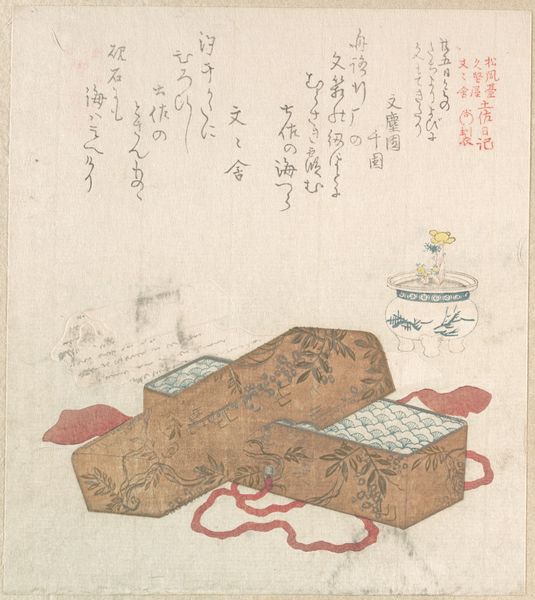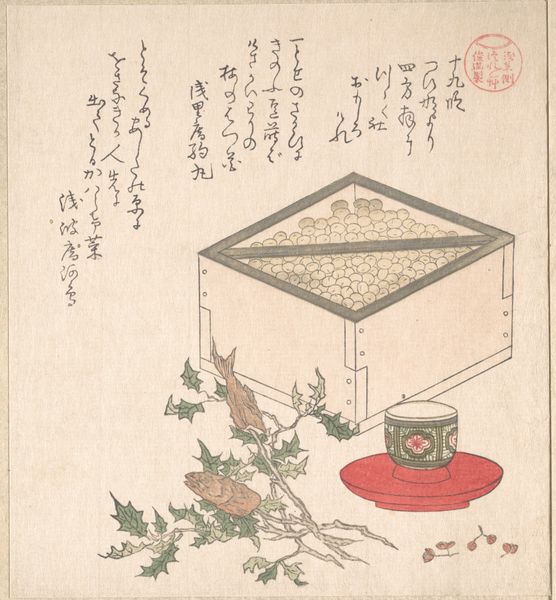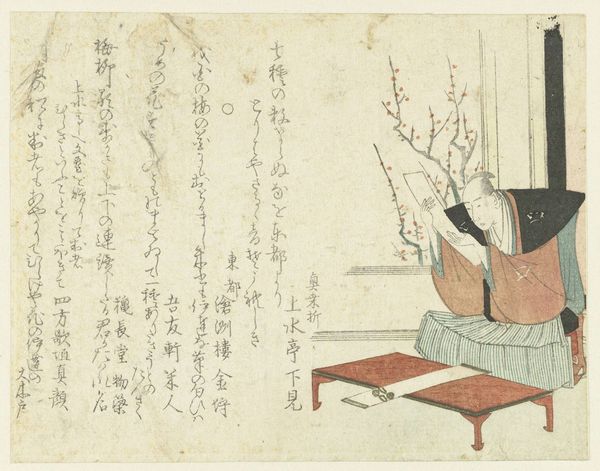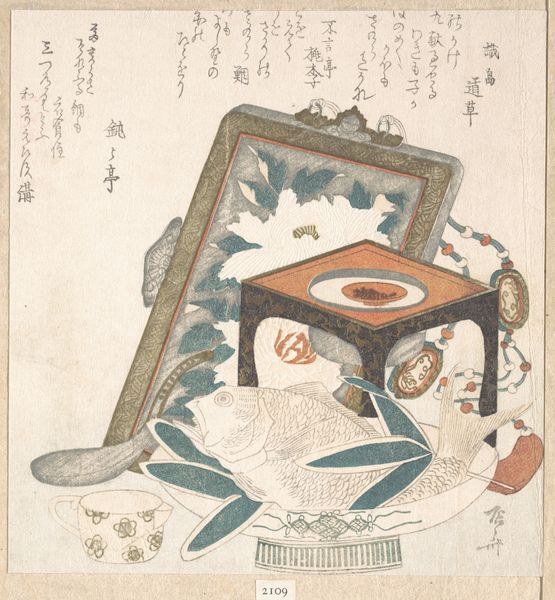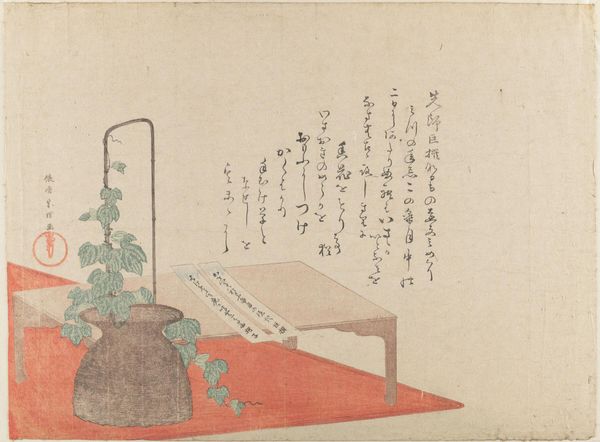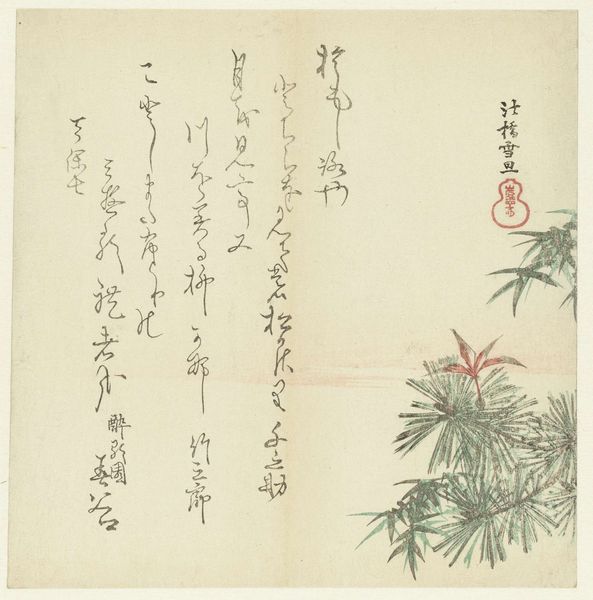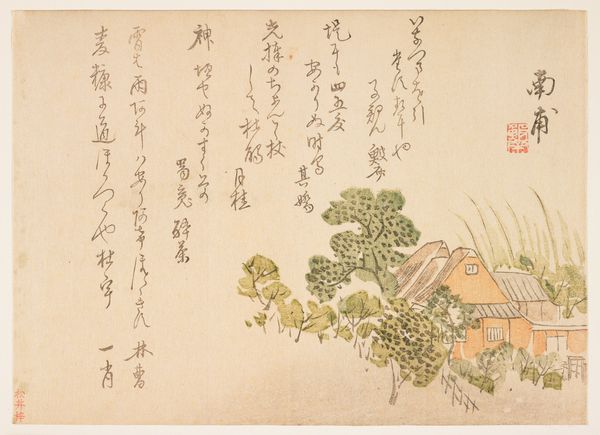
drawing, print, paper, ink, woodblock-print
#
drawing
# print
#
asian-art
#
landscape
#
ukiyo-e
#
paper
#
ink
#
woodblock-print
#
watercolour illustration
Dimensions: height 211 mm, width 189 mm
Copyright: Rijks Museum: Open Domain
Curator: This delicate woodblock print by Yashima Gakutei, dating to 1822, offers an intimate glimpse into the world of a scholar or poet. It's titled "Schrijftafel van de dichter," or "Writing Table of the Poet." I find it calming, even a little melancholy, despite its apparent simplicity. There's something about the ordered chaos on that table... Editor: Yes, the term "ordered chaos" hits it. The image definitely sparks curiosity. There's such an interesting mix of clarity in the central framed writing and slight disorientation created by objects scattered around it. That leaning frame seems to suggest some hidden anxieties, maybe about artistic production itself, back in a turbulent historical context, given its place in the Rijksmuseum collection. Curator: It’s more of a snapshot of creative labor. I am interested in how specific elements might act as carriers of memory, the stacked papers for example, these can evoke images of previous manuscripts written with certain techniques. Do they bear weight of literary tradition, the expectations, anxieties about creating something meaningful within the canon? Even the scholar's robe discarded on the floor can act as a signal; a mark of absorbed attention that only allows for complete abandonment to enter the flow of creativity. Editor: Right. And if we read that symbolism through a social lens, we also see hints about the status of intellectual labor. Who got to create in 1822, who had the time and the resources to develop their talent? This wasn't a universally available luxury, so the scene likely reflects a very particular social position. Curator: Absolutely. And those Japanese characters in the frame is a calligraphic focal point which is not there only for decoration. Its placement gives meaning to an everyday object—elevating a table into a symbol of creativity, intellect and inner contemplation. That the artist chose this exact angle feels very personal. Editor: Personal and pointed. In its seeming serenity, it really encourages us to probe how both individual inspiration and broader social realities shaped artistic output then, and continue to now. It asks us questions about whose stories get told, how, and why. Curator: I find it reassuring in how its presentation, via familiar items such as the stationary and utensils that this ancient writing space presents itself to the viewer not as a site of unreachable intellect, but of creativity's mundane processes and intimate accessibility. Editor: And that invitation to approach, to inquire, feels more vital than ever.
Comments
No comments
Be the first to comment and join the conversation on the ultimate creative platform.
